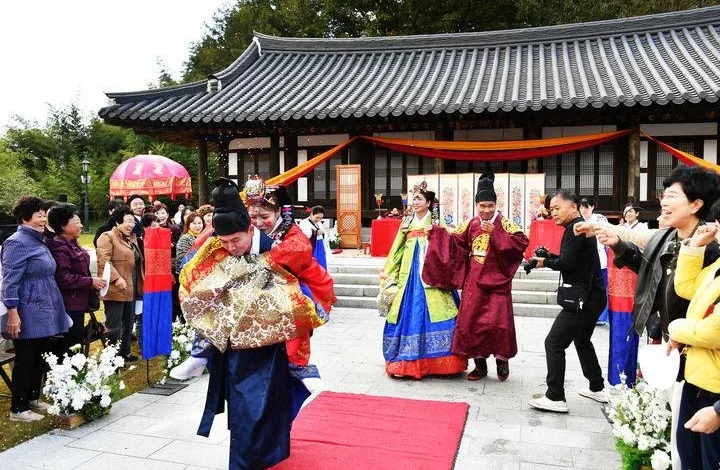In South Korea multicultural marriages hit post-pandemic high; births rise for 1st time in 12 years

The number of multicultural marriages in Korea last year reached its highest level since before the COVID-19 pandemic, the Ministry of Data and Statistics said Thursday.
The number of births from multicultural parents also rose by more than 1,000 from a year earlier, marking the first increase in 12 years.
The ministry attributed the growth to a rebound in demand for international marriages that had been subdued during the pandemic, along with the government’s strengthened family support measures, which appear to have benefited multicultural families.
The number of multicultural marriages stood at 21,450 last year, up 1,019, or 5 percent, from the previous year.
The figure had been on a steady rise since 2016 and reached 24,721 in 2019, before dropping sharply to 16,177 in 2020 following the outbreak of COVID-19. It fell further to 13,916 in 2021 but has since been recovering gradually, surpassing 20,000 in 2023.
“The increase likely stems from a resurgence in international marriage demand that had been suppressed during the pandemic, coupled with greater stability in the residency status of foreign workers in Korea,” a ministry official said.
Still, total marriages nationwide rose 14.8 percent year-on-year to 222,000 in 2024, a much steeper increase than that seen among multicultural marriages. This led to a 1 percentage point drop in the share of multicultural marriages among the total to 9.6 percent.
By type, marriages between Korean men and foreign women accounted for 71.2 percent of all multicultural marriages, followed by Korean women and foreign men at 18.2 percent. Cases in which either or both spouses are naturalized citizens made up 10.6 percent.
Among foreign wives, Vietnamese accounted for the largest share at 26.8 percent, followed by Chinese at 15.9 percent and Thai at 10 percent.
Meanwhile, the number of multicultural births rose to 13,416 in 2024, an increase of 1,266, or 10.4 percent, from a year earlier.
After declining steadily since 2013 in line with the nation’s falling birthrate, the figure turned upward last year for the first time in 12 years.
It also marked the sharpest increase since 2011, when the number rose by 1,702. In percentage terms, the 10.4 percent growth was also the highest since 2009, when multicultural births surged 41.5 percent.
With the growth rate of multicultural births far outpacing the 3.6 percent rise in total births nationwide, the share of multicultural newborns climbed 0.3 percentage point from a year earlier to 5.6 percent.
“The upward trend likely reflects both the growing stability of multicultural families and the government’s expanded family support initiatives,” the ministry official said.





